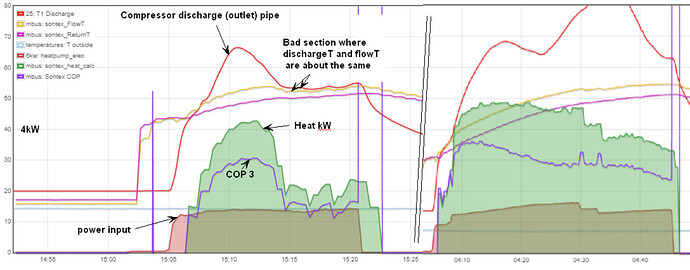I am not the person to ask about getting that data out. Others might know. I fitted an ds18b20 sesnor to the compressor discharge pipe (red line). It’s tricky to fit well onto such a small pipe. This was very useful for seeing what was happening. As this shows, the discharge should be superheated (as times when COP is good). Where the discharge temperature drops to a similar value as the flow temperature, the COP is very poor
1 Like
